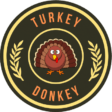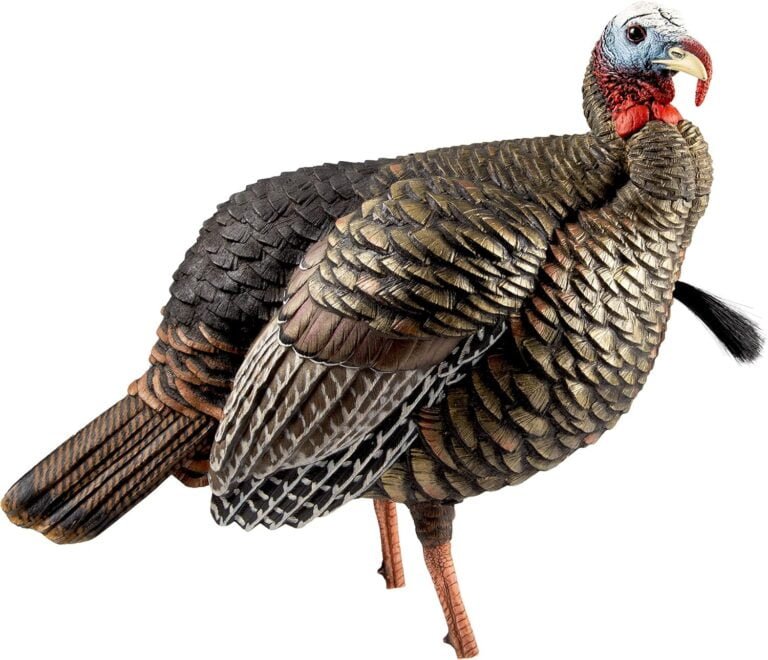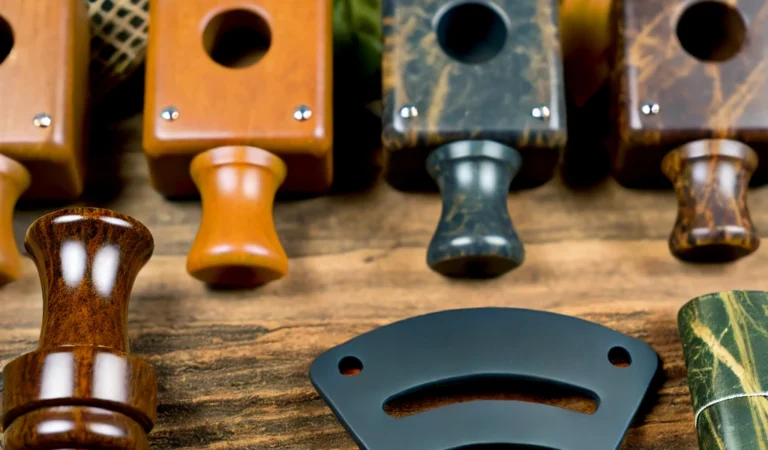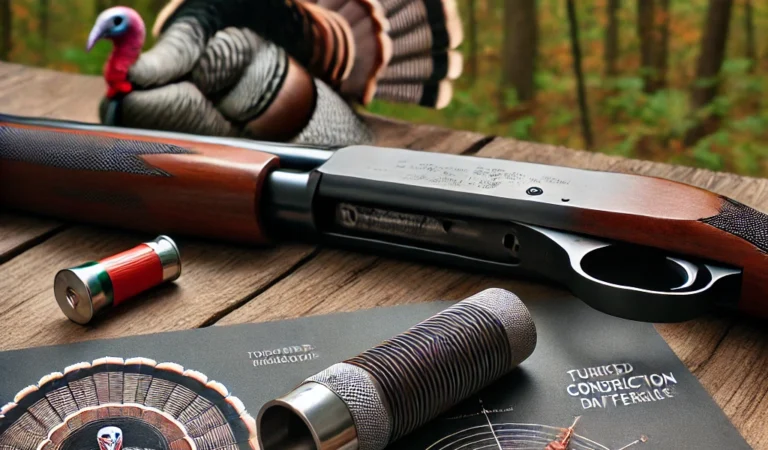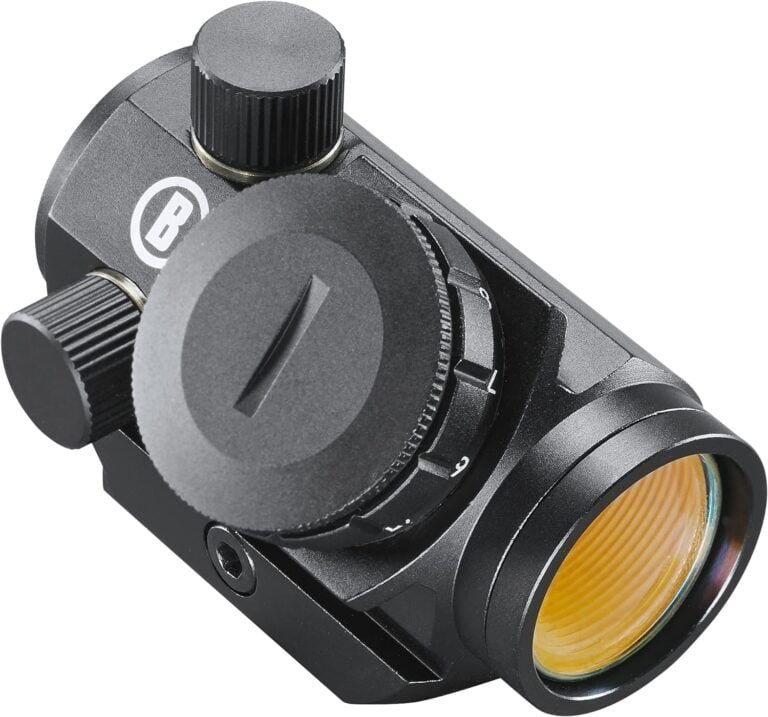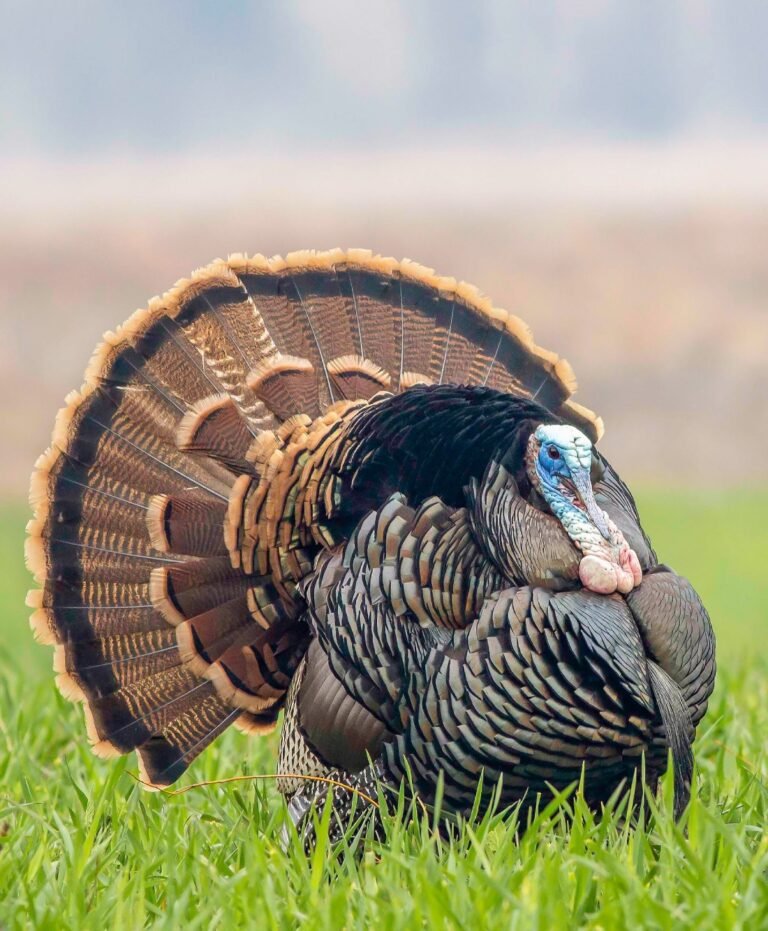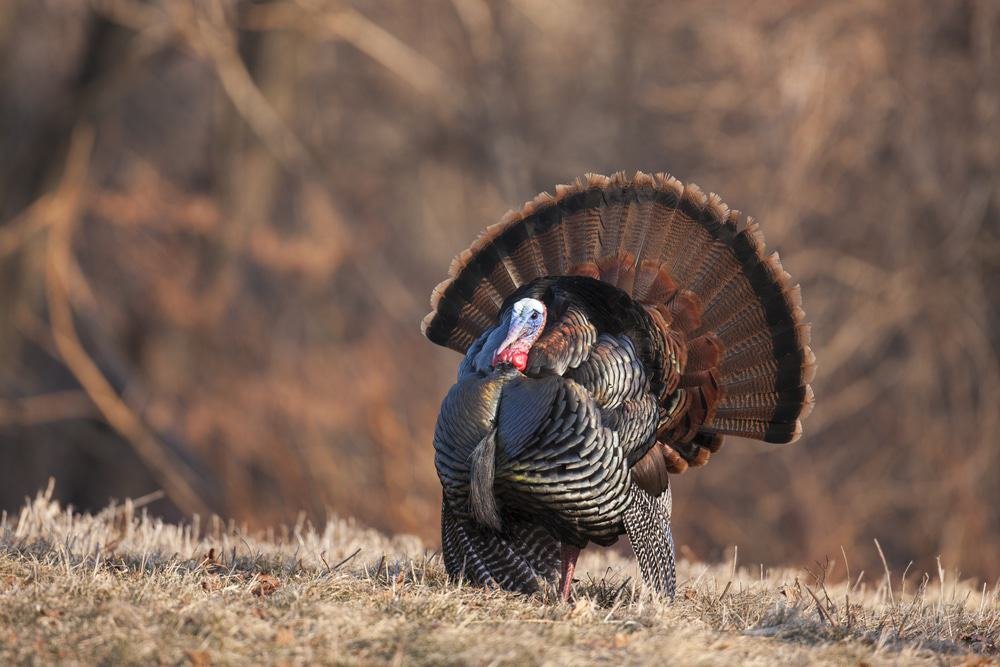15 Essential Turkey Hunting Tips for a Successful Season
The crisp spring air fills your lungs as you crouch silently in the pre-dawn darkness during the spring turkey season. Suddenly, a distant gobble breaks the silence, sending a surge of adrenaline through your veins. This is the moment every turkey hunter lives for – but are you prepared to make the most of it?

Whether you’re a seasoned pro or a novice heading into your first turkey season, the right techniques can differentiate between a triumphant harvest and a frustrating day in the woods. In this comprehensive guide, we’ll explore 15 essential turkey hunting tips that will dramatically increase your chances of success.
From mastering the art of calling to perfecting your camouflage game, we’ll cover everything you need to know to outsmart even the wiliest old tom. So grab your shotgun, don your camo, and get ready to elevate your turkey hunting skills to the next level. Let’s dive into the strategies to help you bag that trophy bird and create memories that will last a lifetime.
1. Scout Your Hunting Area
Success in turkey hunting begins long before you take your first shot. Proper scouting is crucial to understanding turkey behavior and locating the best hunting spots. Here’s how to become a scouting expert:
Scouting areas with less hunting pressure can significantly improve your chances of finding roosted gobblers.
Identify Turkey Habitats
To effectively hunt wild turkeys, look for areas with a mix of open fields and wooded areas. Understanding these habitats is crucial for a successful hunt.
Focus on locations near water sources, as turkeys need to drink daily
Pay attention to agricultural fields, especially those with leftover grain
Recognize Turkey Signs
Learn to spot turkey tracks: they’re distinct three-toed prints, with the middle toe longer than the others.
Look for turkey droppings: they’re often J-shaped for males and spiral-shaped for females.
Keep an eye out for feathers, especially in dusting areas where turkeys clean themselves.
Use Technology to Your Advantage
Utilize satellite imagery and topographic maps to identify potential turkey hotspots.
Consider using trail cameras to monitor turkey activity in your chosen areas.
Remember, successful scouting often means visiting your hunting area multiple times and at different times of day to understand turkey patterns truly.
2. Master Turkey Calls
Effective calling is perhaps the most crucial skill in wild turkey hunting. It’s the primary way to attract gobblers to your location. Here’s how to become a turkey-calling virtuoso:
Types of Calls
Box Calls: Great for beginners, these produce loud yelps and are effective over long distances
Slate Calls: Versatile calls that can produce a wide range of wild turkey sounds
Diaphragm Calls: Hands-free option that takes more practice but offers the most versatility
Basic Turkey Sounds to Master
Yelp: The most common turkey vocalization, used to get attention
Cluck: A short, sharp note often used by feeding turkeys
Purr: A soft, rolling sound that indicates contentment
Gobble: Typically made by male turkeys, especially during mating season. While the gobble is effective for attracting female turkeys, it can also attract fellow hunters to your position.
Practice Makes Perfect
Start with a box call to learn basic sounds
Graduate to a slate call for more nuanced vocalizations
Invest time in mastering the diaphragm call for ultimate versatility
Remember, less is often more when it comes to calling. Overcalling can make wild turkeys suspicious. Start soft and increase volume and frequency only if necessary.
3. Perfecting Your Camouflage
Wild turkeys have exceptional eyesight, so proper camouflage is essential. Here’s how to become virtually invisible in the woods:
Break Up Your Silhouette
Wear a full camouflage outfit, including a face mask and gloves
Choose patterns that match your hunting environment (e.g., leafy patterns for wooded areas, more open patterns for fields)
Use a leafy ghillie suit for maximum concealment
Recommended Camouflage Patterns
Mossy Oak Obsession: Great for spring hunts with its mix of light and dark greens
Realtree Edge: Versatile pattern that works well in a variety of environments
Natural Gear: Effective in both wooded and open areas
Don’t Forget These Camo Tips
Ensure your gun or bow is also camouflaged
Avoid any shiny objects that might reflect light
Stay in the shadows whenever possible
Remember, even with perfect camouflage, movement is your biggest enemy. Practice sitting still for long periods to blend into your surroundings.
4. Set Up Your Decoys Effectively
Decoys can be a game-changer in turkey hunting, but only if used correctly. Here’s how to make the most of your decoy strategy:
Types of Decoys and When to Use Them
Hen Decoys: The most versatile, use these in most hunting situations
Jake Decoys: Can attract dominant toms looking to chase off competition
Strutter Decoys: Most effective during peak mating season, but use with caution as they may intimidate smaller toms
Proper Decoy Placement Strategies
Set decoys 15-20 yards from your position for an ideal shot
Face decoys at a slight angle toward you, allowing approaching turkeys to see them clearly
In open areas, place decoys on high points for better visibility
In wooded areas, set up in small clearings where decoys are visible but not too exposed
Remember, less is often more with decoys. A single hen decoy is often sufficient and less likely to spook wary turkeys.
5. Time Your Hunt Right
Timing can make or break your turkey hunting success. Planning an early morning hunt following an unsuccessful evening hunt is crucial, as it allows you to locate and listen for gobblers in areas where you have heard them before. Understanding when turkeys are most active will significantly increase your chances.
Best Times of Day for Turkey Hunting
Dawn: Turkeys are often most vocal and active right after flying down from their roosts
Mid-Morning: If dawn doesn’t produce, many hunters find success from 8:30-10:30 AM
Evening: Turkeys become active again as they prepare to roost for the night
Seasonal Considerations (i.e. Spring Turkey Hunting)
Early Season: Focus on open fields and strut zones where toms display for hens
Mid-Season: As hens begin nesting, toms become more responsive to calls
Late Season: Toms may be more wary; patience and soft calling are key
Fall Turkey Seasons: Many states have reintroduced fall turkey seasons due to population stabilization. Understanding state regulations and checking official resources for accurate season dates and bag limits is crucial.
Pro Tip: Keep a hunting journal to track patterns in turkey behavior over time and across seasons.
6. Practice Patience
Patience is perhaps the most underrated skill in turkey hunting. Here’s how to cultivate this crucial attribute:
The Importance of Sitting Still and Waiting
Turkeys have excellent vision and can detect even slight movements
Often, the most successful hunters are those who can remain motionless for extended periods
Resist the urge to reposition or call constantly; let the turkeys come to you
How to Stay Comfortable During Long Waits
Invest in a quality hunting seat or cushion
Wear layers to adjust to changing temperatures throughout the day
Practice proper stretching techniques to prevent cramping
Bring high-energy, quiet snacks to maintain focus during long sits
Remember, turkeys operate on their schedule. The patience to wait out a stubborn tom often makes the difference between success and failure.
7. Improve Your Shot Placement
All your preparation comes down to the moment of truth – taking the shot. Here’s how to make it count:
Vital Areas to Aim For
Head and Neck: The most effective target, but also the smallest
Wing Butt: Where the wing joins the body, a good alternative target
Avoid body shots, as turkeys’ feathers and bone structure can deflect pellets
Practice Exercises to Improve Accuracy
Pattern your shotgun with different chokes and loads to understand its performance.
Practice shooting from a seated position, simulating real hunting scenarios
Use life-sized turkey targets to familiarize yourself with proper aim points.
Try shooting with your mask and gloves on to mimic hunting conditions
Pro Tip: Know your effective range and stick to it. It’s better to pass on a marginal shot than to risk wounding a bird.
8. Choose the Right Shotgun and Ammunition
Your choice of turkey guns, including the right firearm and ammo, can significantly impact your hunting success. Here’s what you need to know:
Recommended Gauges for Turkey Hunting
12 Gauge: The most popular choice among most turkey hunters, offering a good balance of power and manageable recoil
20 Gauge: A lighter option, suitable for smaller-framed hunters or those sensitive to recoil
10 Gauge: Offers maximum power but can be heavy and has significant recoil
Shot Sizes and Choke Options
Shot Sizes: #4, #5, or #6 are most common for turkey hunting
Chokes: Extra-full or turkey-specific chokes are ideal for tight patterns at longer ranges
Pro Tip: Pattern your shotgun with different load and choke combinations to find what works best for your setup.
9. Use the Terrain to Your Advantage
Understanding and utilizing the landscape can give you a significant edge in turkey hunting.
How to Approach Turkeys in Different Landscapes
Open Fields: Use any available cover, even small rises in the ground, to stay hidden
Wooded Areas: Move from tree to tree, using trunks as cover
Hilly Terrain: Try to stay on the downhill side of turkeys, as they’re less likely to look downhill
Using Natural Blinds Effectively
Look for clusters of trees, large fallen logs, or rock formations
Enhance natural blinds with surrounding vegetation, but avoid excessive movement
Position yourself with the sun at your back to help conceal your movements
Always prioritize safety when choosing your hunting position, especially in areas with other hunters.
10. Learn to Read Turkey Behavior
Understanding turkey body language and behavior patterns can help you predict their next move.
Understanding Turkey Body Language
Upright, alert posture: The turkey is suspicious or has spotted something
Relaxed, feeding posture: The turkey feels safe and may be more receptive to calls
Fanned tail and dropped wings: A strutting tom, often ready to approach a hen
Recognizing Mating Behaviors and How to Exploit Them
Gobbling: Use soft hen calls to attract the tom
Strutting: Set up hen decoys to draw the tom in closer
Fighting purrs: Mimic these sounds to attract dominant toms curious about the commotion
11. Stay Safe in the Field
Safety should always be your top priority when turkey hunting.
Essential Safety Gear
Blaze orange vest and hat for walking to and from your hunting spot
Eye and ear protection when shooting
First aid kit and emergency communication device
Best Practices for Hunting in Groups
Always identify your target and what’s beyond it before shooting
Never stalk turkey sounds or movement; it could be another hunter
Establish clear communication signals with your hunting partners
12. Utilize Technology Wisely
Modern technology can enhance your turkey hunting experience when used appropriately.
Helpful Apps for Turkey Hunters
Mapping apps like onX Hunt for property boundaries and logging your favorite spots
Weather apps to plan for optimal hunting conditions
Turkey call apps for practice or as a backup in the field
Using GPS and Mapping Tools
Mark key locations like roosts, strut zones, and successful hunting spots
Plan entry and exit routes to minimize disturbance
Share locations with hunting partners for safety and coordination
13. Perfect Your Turkey Hunting Strategy
Adapt your approach based on the specific hunting scenario you face.
Run and Gun vs. Sit and Wait Approaches
Run and Gun: Move quietly through the woods, calling periodically to locate birds.
Sit and Wait: Set up in a prime location and use calls to bring turkeys to you.
Adapting Your Strategy to Different Scenarios
Henned-up Toms: Try to separate the tom from the hens by calling aggressively
Pressured Birds: Use minimal calling and focus on patient observation
Late Season: Key in on food sources and use softer, less frequent calls
Veteran Turkey Hunters: Leverage the insights and strategies shared by veteran turkey hunters, who emphasize their expertise in navigating challenging hunting situations.
14. Understand Turkey Vocalizations
Mastering the language of turkeys can give you a significant advantage.
Differentiating Between Hen and Gobbler Calls
Hen Yelps: Higher-pitched and more rapid
Gobbler Yelps: Lower-pitched and slower
How to Interpret and Respond to Turkey Sounds
Excited Cutting: A hen is fired up; respond with equally excited calls
Soft Clucks and Purrs: Contentment; use similar soft calls to avoid spooking
Gobbler Yelps: A tom searching for hens responds with enticing hen calls
15. After the Hunt: Field Dressing and Cooking
A successful hunt doesn’t end with the shot. Proper care of your harvest is crucial.
Quick Guide to Field Dressing a Turkey
Remove the beard first
Pluck or skin the bird based on your preferred cooking method
Eviscerate the turkey, being careful not to rupture the innards
Cool the meat quickly to preserve quality
Simple, Delicious Wild Turkeys Recipes
Pro Tip: Save the feathers, spurs, and fan for beautiful mounts or craft projects to commemorate your hunt.
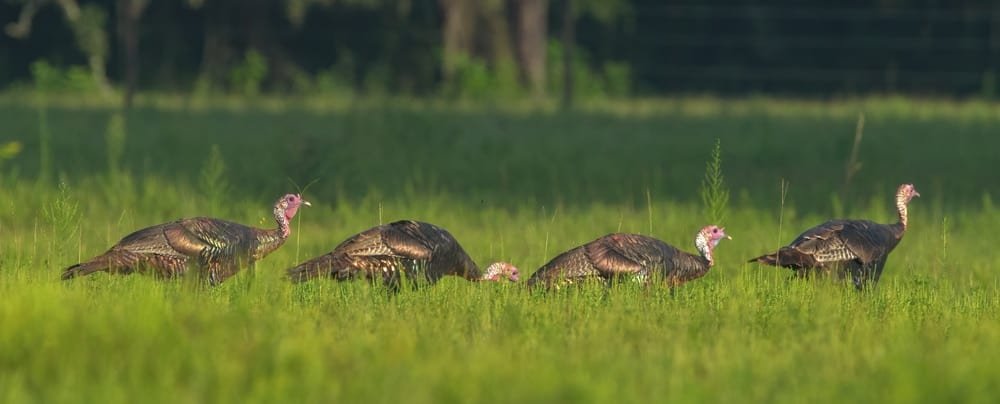
Conclusion – Turkey Hunting Tips
Mastering these 15 essential turkey hunting tips will dramatically increase your chances of a successful and enjoyable hunt. Remember, every outing is an opportunity to learn and improve your skills. Stay patient, stay safe, and enjoy the thrill of outsmarting one of nature’s wiliest birds. Happy hunting!
